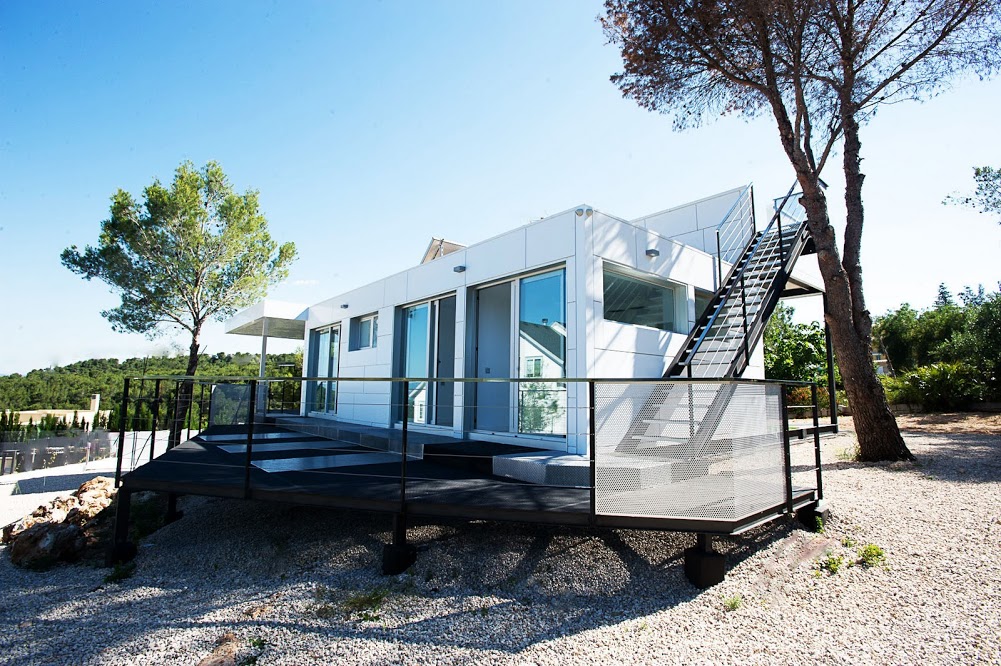
Modular buildings have become increasingly popular over the past decade. They offer many benefits that traditional construction cannot match, from cost savings to rapid deployment. But what types of modular buildings are available? Let’s look at some of the most common types of modular buildings and how they can be used to benefit your business or organization.
Modular Office Buildings
This type of modular building is designed to provide a comfortable, professional workspace for employees and clients alike. Modular offices come in standard sizes from 8×10 feet up to 20×40 feet or larger depending on your needs. They can also be customised with features such as windows, doors, bathrooms, kitchenettes, HVAC systems, and more. They’re perfect for construction sites or remote locations where you need an office but don’t have the time or budget for a traditional build. With working from home becoming more normal post-covid, some people are now utilising modular garden office pods that they can have placed in their own homes.
Modular Classrooms
Modular classrooms are ideal for educational institutions looking to add extra space without investing in expensive construction costs. These buildings can accommodate anywhere from 10 to 200 students and come equipped with desks, chairs, storage cabinets, audio/visual equipment, network cables and much more. The walls are insulated and soundproofed so that the learning environment stays quiet even when there are lots of students inside the classroom.
Modular Medical Buildings
These types of modular buildings are specifically designed for healthcare facilities such as clinics, hospitals, urgent care centres, medical testing labs and more. They feature high ceilings so that installation of medical equipment like X-ray machines is easy; they also come with air conditioning units to ensure proper temperature control. Additionally, these buildings meet all applicable fire safety codes required by local governments so that patients can feel safe when receiving care inside them.
Multi-Story Modular Buildings
Multi-story modular buildings are designed and constructed with an eye towards maximum efficiency. These structures can be up to three stories tall and have been designed with ease of transport in mind; they can be split into smaller sections for easier delivery and onsite assembly. As with all modular construction projects, multi-story buildings are built in a factory setting where there is more precise control over safety, quality assurance, budgeting, scheduling, and environmental impact. These buildings are often used as hotels, apartment complexes, office spaces, schools, hospitals, and emergency shelters—the possibilities are endless!
Industrial Modular Structures
Industrial modular structures are perfect for those who need large-scale storage solutions or specialised factory settings. These structures are ideal for hazardous materials storage or applications where dust control is important; they can also be used as manufacturing facilities or warehouses. Industrial modular structures offer superior flexibility; they can be customised to fit your exact specifications and relocated if necessary, without sacrificing structural integrity or safety standards. Furthermore, these structures require minimal maintenance once installed by modular building contractors which makes them an attractive option for those looking for cost-effective long-term solutions.
Retail Modular Units
Retail modular units provide businesses with quick access to high-quality retail space that’s ready to move into immediately upon delivery—allowing retailers to focus their efforts on stocking products rather than constructing walls or waiting on permits from local governments. These units come pre-finished with interior walls/floors/ceilings/electrical/plumbing so that all you need to do is plug in your equipment and furnishings before opening the doors for business! Additionally, these units offer superior insulation capabilities compared to conventional construction methods which help save money on energy bills over time.
Conclusion
Modular buildings offer many advantages over traditional construction methods including cost savings on labour costs since no construction site is required; time savings since the entire process takes place offsite; flexibility due to their ability to be reconfigured or relocated; sustainability since most materials used in construction are recyclable; and ease of use due to their simple assembly process once delivered onsite. Whether you’re looking for temporary office space or a permanent structure for your business needs, modular buildings provide an efficient solution that will meet your needs without breaking the bank!
You may be interested in: Modular Storage Systems vs. Static Shelving: Which is Better For Industrial Application

